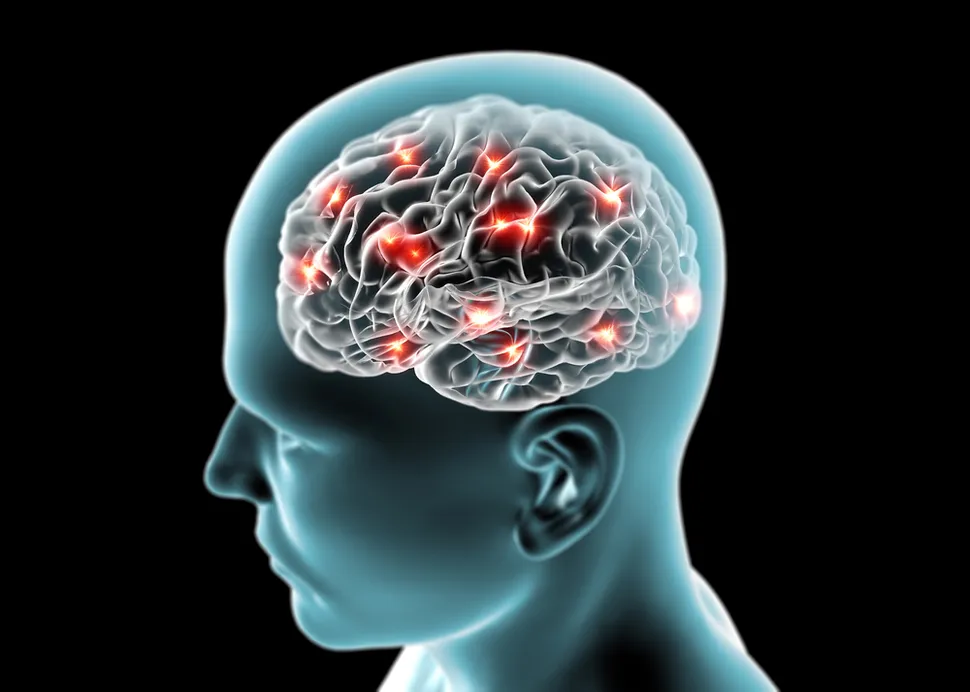Your heart races. Your palms sweat. Your stomach churns. You can’t focus. You feel dizzy, distracted, and desperately alert. Something big is happening—something you can’t quite name.
Are you in love?
Or are you terrified?
Biologically, the answer may be: yes.
In the strange, beautiful architecture of the human brain, love and fear light up many of the same circuits. They trigger the same hormones. They create nearly identical physical sensations. And they can both drive you to act irrationally, impulsively, or heroically.
This overlap is not a mistake of evolution. It’s not a malfunction of emotion. It’s the evidence of something ancient and sacred—proof that love and fear are two sides of the same coin, forever chasing and mirroring each other in the human psyche.
Understanding how and why the brain interprets these emotions in such similar ways reveals not only the neurobiology of our behavior, but the deeper truth about what it means to feel alive.
The Amygdala: Your Brain’s Emotional Switchboard
In the center of your brain sits a small, almond-shaped structure called the amygdala. It’s ancient, fast, and powerful—one of the oldest parts of the brain in evolutionary terms. The amygdala doesn’t think. It reacts. It detects danger, excitement, intensity, novelty. And it doesn’t always discriminate between good and bad.
When you fall in love, the amygdala lights up. When you’re afraid, it does the same. It scans for emotional significance and sends signals to other parts of the brain to prepare your body: raise the heart rate, increase blood pressure, dilate pupils, sharpen attention, activate survival instincts.
To your amygdala, a crush can feel like a threat. A first date can feel like a predator in the grass.
This is why the beginning of love often feels like panic. Because your body doesn’t yet know the difference.
Adrenaline and Oxytocin: The Chemical Cocktail
One of the clearest overlaps between love and fear is the role of adrenaline. When you’re afraid, your adrenal glands flood your system with it—preparing you to flee, freeze, or fight. Your breathing changes. Your hands tremble. Your pupils dilate. You become hyper-aware of your environment.
Love, especially in its early stages, does almost exactly the same thing. That dizzy, breathless feeling when you see someone you’re infatuated with? That’s adrenaline too. You’re alert. Hypersensitive. Wired.
You also get a hit of dopamine, the brain’s reward chemical. The person becomes a source of pleasure, anticipation, craving. You feel addicted, euphoric, jittery.
And then, as intimacy grows, another hormone steps in: oxytocin. Known as the “love hormone,” oxytocin deepens emotional bonds. It’s released during touch, orgasm, even eye contact. But oxytocin is also released in stressful situations, like childbirth, physical pain, and trauma.
It’s as if your brain pairs love with danger on purpose—ensuring that you remember both vividly.
This is not by accident. This is how the brain encodes what matters.
Why Falling in Love Feels Like Losing Control
Love and fear don’t just feel the same—they function the same way neurologically. Both put the brain in a heightened state of arousal. And both can short-circuit the parts of your brain responsible for rational thought.
Specifically, love and fear temporarily deactivate the prefrontal cortex, the area responsible for judgment and decision-making. This is why love can make us reckless. It’s why we ignore red flags. Why we take wild risks. Why we overlook logic in favor of feeling.
Love and fear both disorient us—stripping away our usual defenses. They force us into vulnerability.
It’s a kind of madness. But it’s also where intimacy begins.
Because love, at its core, is not about safety. It’s about choosing connection in the face of risk.
Attachment Theory: Childhood Echoes in Adult Love
Much of how we experience love and fear in adulthood has roots in our earliest relationships. According to attachment theory, the bonds we form with caregivers shape how we respond to intimacy and threat later in life.
Children who grow up in environments of emotional inconsistency often learn that love and danger arrive hand in hand. As adults, they may feel most alive in relationships that mirror that same volatility. Chaos becomes familiar. Calm feels foreign. Passion and fear become indistinguishable.
The body, trained in childhood, learns to associate the presence of another person with both comfort and threat.
This is why some people mistake anxiety for chemistry. Why the heart races when the phone doesn’t ring. Why some equate intensity with love.
In truth, it’s the nervous system replaying a loop: love equals fear. Fear equals love. Over and over again.
Understanding this loop can be the first step toward healing it.
Trauma and the Blurring of Love and Fear
For those with a history of trauma—especially relational trauma—love can feel dangerous. Not metaphorically. Literally.
The same physical closeness that others find soothing might trigger panic. Acts of kindness might raise suspicion. Vulnerability might feel like standing on the edge of a cliff.
This is because trauma rewires the brain’s emotional circuits. It teaches the amygdala to stay on high alert. It trains the nervous system to interpret intimacy as a threat. And so, love becomes terrifying—not because it is harmful, but because it touches the same emotional pathways where harm once lived.
People who’ve experienced trauma may pull away from those they love. Or they may cling too tightly. They may test their partner’s loyalty, create conflict, or sabotage connection—all unconsciously.
It’s not because they don’t want love. It’s because their brain is trying to survive it.
Healing, in this case, involves retraining the brain—teaching the nervous system that love can be safe, that closeness doesn’t always lead to pain, and that fear can be a signal to stay, not run.
The Paradox of Emotional Intensity
Intensity is a language the brain understands deeply.
Fear is intense. So is love. And when two people experience intensity together—through shared vulnerability, danger, excitement, or pain—the bond strengthens. The brain releases oxytocin, dopamine, and adrenaline all at once.
This is why shared emotional experiences create closeness. Why soldiers feel like brothers. Why trauma survivors form deep connections. Why couples who go on adventures—or through crises—feel bonded.
But there’s a shadow side.
Sometimes, we seek intensity not because we want love, but because we want to feel something. Anything. Numbness drives people to chase relationships that mirror the physiological rush of fear. They confuse drama with depth. Conflict with connection.
The brain doesn’t always know the difference.
It just remembers the feeling.
Love, Fear, and the Unknown
At their core, both love and fear are responses to the unknown.
Fear emerges when we face uncertainty—when the outcome is unclear, when our safety feels at risk. Love does the same. To love someone is to stand on the edge of the future and say, “I don’t know what comes next, but I choose you anyway.”
Both emotions demand courage. Both demand surrender. And both require us to step into vulnerability—into a space where we cannot control the outcome.
That’s why love is terrifying.
And that’s why fear, when met with compassion, can turn into love.
Because the human heart is not binary. It’s not wired to separate neatly into this or that, good or bad, love or fear.
It’s wired to feel everything all at once—and find meaning in the mix.
The Brain’s Need for Meaning
One of the brain’s primary functions is meaning-making. It tries to turn emotional chaos into coherence. It searches for stories that explain what we’re feeling.
When the body feels the symptoms of love—racing heart, dry mouth, hyper-focus—the brain will look for a reason. If the context is romantic, it will label the sensation as attraction. If the context is dangerous, it labels it as fear. But the physiology is nearly identical.
This is why people sometimes fall in love with someone they’re trapped in an elevator with. Or why near-death experiences can awaken feelings of deep attachment. The brain interprets the shared intensity as a bond. As love.
It fills in the blanks with story. With hope. With meaning.
But meaning is malleable. And the stories we tell ourselves can shift the way we experience the world.
If you tell yourself love is terrifying, your body will brace against it.
If you tell yourself fear is a sign to run, you may miss something sacred.
But if you learn to sit with both—to listen to what they’re asking of you—you begin to create a new kind of intimacy. One grounded not in control, but in awareness.
When Fear Disguises Itself as Love—and Vice Versa
Sometimes, we stay in toxic relationships because we confuse fear with love. We feel jealous, anxious, obsessed—and interpret those emotions as passion. We mistake emotional chaos for chemistry. We believe suffering is proof of depth.
Other times, we flee healthy love because it feels too quiet, too calm, too unfamiliar. Our brain doesn’t light up with adrenaline, so we assume it’s not real. But in truth, it’s just safe—something the nervous system doesn’t yet recognize as love.
The challenge is learning to decode these signals. To distinguish between fear disguised as love and love that simply awakens our fear.
The first is dangerous.
The second is transformational.
Because real love, the kind that lasts, doesn’t bypass fear. It walks through it—with open eyes and steady hands.
The Evolutionary Function of Love-Fear Overlap
Why did evolution wire us this way? Why would love and fear share the same circuitry?
Because they serve a similar purpose: survival.
Fear keeps us alive by alerting us to danger. Love keeps us alive by binding us to each other. In a harsh, unpredictable world, our ancestors needed both. They needed fear to avoid threats—and love to ensure cooperation, protection, reproduction, and caregiving.
The overlap ensured that we didn’t just survive alone, but together. That our fear would tether us to the group. That our love would keep us from leaving those we needed. That vulnerability, while risky, would be rewarded with closeness.
Evolution didn’t separate love and fear because life didn’t. Life demanded that we feel both, often at the same time.
And the brain, in its elegant design, made sure we could.
The Sacred Tension of Love and Fear
In every love story, fear is present.
The fear of losing. Of being seen. Of not being enough. Of being too much. Of changing. Of staying the same. Of being abandoned. Of being trapped. Of being truly known.
But it’s within that tension that something holy happens.
Because the deeper truth is: love doesn’t eliminate fear. It includes it.
Love is not the absence of fear. It is the decision to reach across the divide despite it.
And fear is not always the enemy. Sometimes, it’s a signpost. A signal that you are standing at the edge of something real. Something that matters. Something that asks more of you than you’ve ever given.
And that—that wild, trembling moment of choice—is where love is born.
Not in the certainty.
But in the risk.





